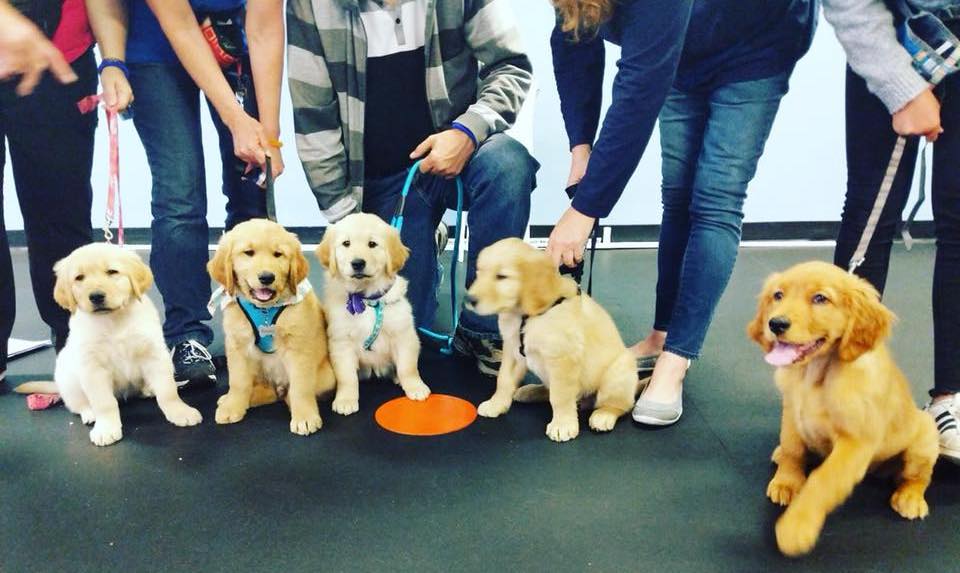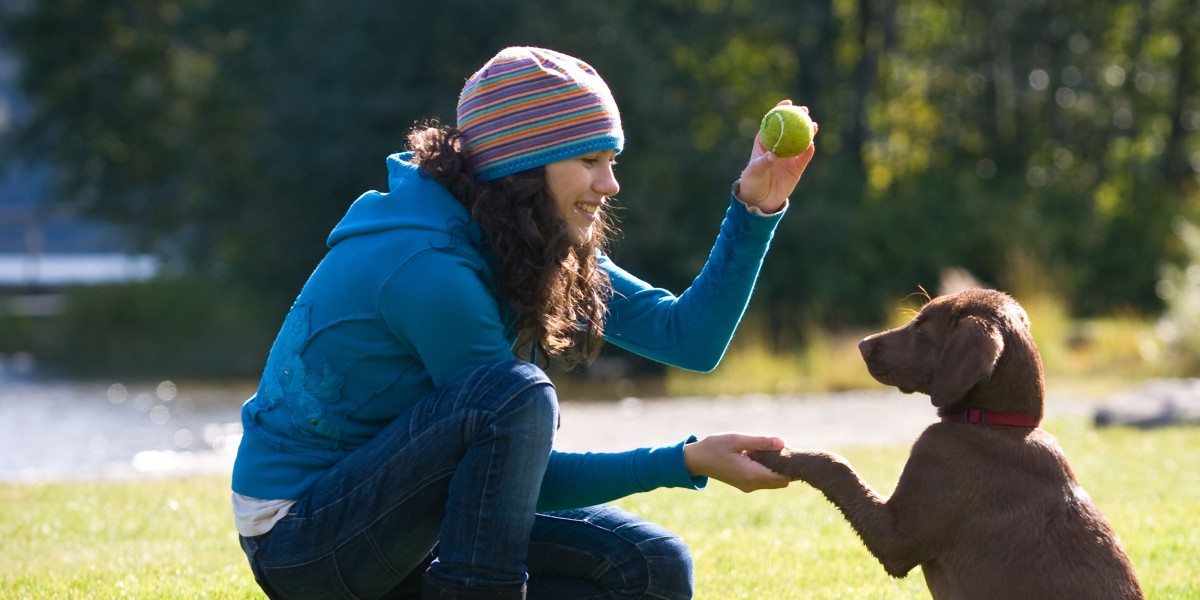Puppy Training Techniques: Teaching Basic Commands for a Happy Pet
Puppy Training Techniques: Teaching Basic Commands for a Happy Pet
Blog Article
Top Pup Training Strategies to Make Certain a Well-Behaved Family Pet
Efficient pup training is vital for cultivating a mannerly companion, and numerous techniques can significantly affect a pet dog's growth. As we explore these approaches further, it ends up being clear that the success of puppy training pivots on a combination of strategies that can change your animal's behavior in impressive methods.
Favorable Reinforcement Methods
Making use of positive support strategies is crucial for efficient young puppy training, as it encourages wanted behaviors via benefits instead than punishment. This method profits from the all-natural discovering procedures of pet dogs, enhancing etiquette by supplying prompt and substantial incentives, such as deals with, praise, or playtime. By connecting positive results with details activities, young puppies are more probable to duplicate those habits in the future.
Benefits must be provided promptly after the desired habits occurs to produce a clear connection in the puppy's mind. In addition, differing the kinds of incentives can maintain a puppy's interest and motivation throughout the training procedure.

Uniformity in Educating Commands
Keeping uniformity in training commands is crucial for strengthening the lessons learned with positive support strategies. Canines grow on regular and predictability, so making use of the very same spoken commands and hand signals for specific behaviors is vital. This harmony helps puppies comprehend what is anticipated of them, decreasing confusion and stress for both the fitness instructor and the pet dog.

Timing also plays a significant role in consistency. Commands should be provided quickly during training sessions and complied with quickly by positive support, such as treats or appreciation. This instant action assists strengthen the association in between the command and the wanted habits.
Including uniformity right into training sessions will certainly create a secure learning environment, promoting quicker proficiency of commands. Ultimately, a well-structured method fosters a strong bond in between the young puppy and its owner, causing a much more mannerly and loyal family pet.
Socialization With Other Pets
Socialization with other animals is important for a young puppy's advancement, as it assists them learn ideal actions and communication abilities in diverse social contexts. Early communications with different animals can dramatically affect a puppy's personality and adaptability in different circumstances. When pups are exposed to a selection of animals, they come to be a lot more certain and less fearful, which can prevent prospective behavior concerns later on in life.

Educate your pup to identify signals from various other pet dogs, such as signs of playfulness or discomfort, promoting mutual respect and understanding. Routine socialization not just improves your young puppy's social skills but also contributes to their overall well-being, developing an extra harmonious living setting.
Cage Training Advantages
Acknowledging the numerous benefits of cage training can significantly boost both the puppy's and proprietor's experience. Crate training offers a secure and secure environment for young puppies, ensuring they really feel protected when laid off. This complacency can considerably reduce stress and anxiety and tension degrees for both the animal and the proprietor.
In addition, crates act as a useful house-breaking device. Puppies naturally stay clear of staining their sleeping location, thus encouraging them to hold their bladder until they are allow outside. This instinct can quicken the housebreaking process, cultivating excellent habits beforehand.
When without supervision,Crate training additionally assists in managing a young puppy's check these guys out habits - puppy training. By providing a marked area, owners can stop damaging behaviors, such as chewing on furniture or obtaining right into unsafe compounds. Dog crates can be advantageous during traveling, providing a familiar area that can aid calm a puppy in new settings.
Last but not least, establishing a cage regular encourages self-reliance, permitting pups to site learn how to be alone without concern. Generally, pet crate training is an efficient technique for advertising peace, discipline, and security, leading to a well-adjusted, well-behaved pet.
Leash Training Basics
Leash training is a basic facet of accountable animal ownership that ensures a risk-free and pleasurable walking experience for both the young puppy and its proprietor. Appropriate chain training starts early, ideally throughout the young puppy's socializing period. When out in public., this training helps develop great behaviors and advertises positive actions.
To start, select a comfortable collar or harness that fits your young puppy well. Connect a sturdy chain, guaranteeing it is not as well long, as this can lead to drawing and irregular behavior. Begin in a peaceful setting to decrease distractions and gradually present your pup to brand-new surroundings.
Use my site positive support strategies, such as treats and praise, to urge your pup to stroll close to you. If your young puppy draws, stop strolling and await them to go back to your side prior to proceeding. This teaches them that pulling will not yield forward activity. Uniformity is vital; technique on a regular basis and continue to be client, as mastery takes some time.
Additionally, incorporate short training sessions with enjoyable interruptions to construct your pup's emphasis. With commitment and determination, leash training will result in an accommodating buddy, making strolls pleasurable for both the proprietor and the puppy.
Verdict
In verdict, utilizing effective young puppy training strategies is critical for creating a well-behaved animal. Generally, these methods jointly promote a harmonious partnership between young puppies and their proprietors.
As we explore these approaches even more, it comes to be clear that the success of puppy training pivots on a combination of strategies that can change your family pet's habits in amazing methods.
Making use of favorable reinforcement strategies is crucial for reliable pup training, as it encourages preferred behaviors with rewards rather than punishment.Crate training also aids in managing a puppy's actions when without supervision.Leash training is an essential aspect of liable family pet ownership that ensures a risk-free and enjoyable strolling experience for both the young puppy and its owner.In verdict, employing effective pup training strategies is critical for creating a mannerly family pet.
Report this page